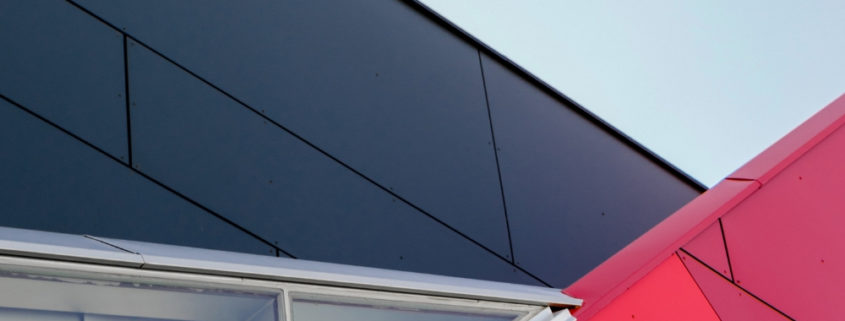The SIS Act lists various superannuation investment rules that are to to keep your super safe until you retire.
Superannuation Investment Rules
Superannuation is highly regulated in Australia. Especially four areas have the legislator’s full attention. How much goes into super. What happens to it while inside. How much moves into pension mode. And how much comes out.
How much goes into super is all about concessional and non-concessional contributions. What happens while inside is all about superannuation investment rules. How much moves into pension mode is all about transfer balance accounts and caps. And how much comes out is all about conditions of release and benefit payments.
Insider Deals
Government and retail super funds are unlikely to do insider deals with you. You are just one small fish in a big pond. But your SMSF might be a temptation too hard to resist when cash is tight. So investment rules are especially relevant for SMSFs, since there is so much room for dodgy deals.
Take the arm’s-length rule as an example. Imagine the arm’s-length rule didn’t exist. Your SMSF could buy below market from related parties and bring extra super in. Or sell below market to related parties and move extra super out. And this points to the highest risk when it comes to SMSFs – related parties. Dodgy deals with related parties.
Related Parties
And so investment rules focus on related parties. This is where the risk is. Your SMSF has two related parties – you and your ‘Part 8 associates’. Part 8 of the SIS Act covers related party transactions – hence the term ‘Part 8 associates’.
You is simple. It is just you. But determining your Part 8 associates is not that simple. It involves a lot of people – your family, fellow SMSF trustees, business partners in a partnership, any entities you or another Part 8 associate controls and so on.
Your family alone includes your spouse, children and close relatives, which includes your and your spouse’s siblings, parents, grandparents, uncles, aunts, nephews and nieces. Can you see how this can get complicated?
Part 8 discusses control in great detail. But to keep it simple, just think of majority. Think of 51% or more. Think of you and your Part 8 associates running the show.
So these related parties are the focus of Australia’s superannuation investment rules.
Investment Rules
There are six investment rules that govern what happens to your super while inside your fund. Protecting your super from you and your Part 8 associates.
You must pass the sole purpose test and act at arm’s length. You must keep in-house assets below 5% of total assets. And you must neither acquire assets from related parties, nor acquire or hold assets for personal use, nor borrow money. That’s it. Just those six rules. But there are plenty of exceptions.
# 1 Pass the Sole Purpose Test
The sole purpose test in s62 (1) of the SIS Act is the core of Australia’s superannuation framework. It requires trustees to focus on the provision of retirement benefits and/or death benefits.
s62 (1) Each trustee …must ensure that the fund is maintained solely: (a) for one or more of …the core purposes; or (b) for one or more of the core purposes and for one or more of the …ancillary purposes..
# 2 Act at Arm’s Length
Trustess must act at arm’s length. No deals with related parties. s109 (1) states this very clearly.
s109 (1) A trustee …must not invest …unless: (a) the trustee …and the other party …are dealing with each other at arm’s length….
But then there is a back door. You can do business with related parties as long as your terms and conditions are at arm’s length.
s109 (1) (b): or… the terms and conditions…are no more favourable to the other party than … if the trustee …were dealing with the other party at arm’s length…
# 3 Keep In-House Assets Below 5%
Dealings with related parties carry a huge inherent risk. To contain this risk the legislator wants to keep super assets connected to related parties at a minimum – below 5%.
s82 (2): If the market value ratio of … in-house assets as at the end of…a…year of income exceeds 5%, the trustee of the fund…must prepare a written plan. …
(4) The plan must set out the steps …to ensure that: (a) … in-house assets …are disposed of during the next … year…; and (b) the value of the assets so disposed of is equal to or more than the excess amount….
Keep in-house assets below 5%. If you don’t, you need to come up with a plan how to get in-house assets below the 5% threshold again in the following year.
There are three categories of in-house assets listed in s71(1) of the SIS Act. Loan, investment or lease – connecting the SMSF to a related party.
s71 (1):…an in-house asset …is an asset …that is a loan to, or an investment in, a related party…, an investment in a related trust…, or an asset….subject to a lease…between a trustee … and a related party…
Lease
Lease might mean a lot more than you think. Para 13.22A of the SIS Regulations defines lease arrangements much wider than other parts of the law.
SIS law assumes a lease whenever a related party controls the use of the asset, even if there is no lease agreement that would be enforceable by legal proceedings.
Para 13.22A:…any agreement, arrangement or understanding in the nature of a lease (other than a lease) between a trustee of a superannuation fund and another person, under which the other person is to use, or control the use of, property owned by the fund, whether or not the agreement, arrangement or understanding is enforceable, or intended to be enforceable, by legal proceedings.
Think of a holiday home owned by an SMSF. If a related party stays there even just one night, SIS law assumes a lease.
Excluded
Certain assets are specifically excluded from being in-house assets per s71(1) SIS Act.
The three exceptions most relevant to SMSFs are 1) business real property, 2) widely held unit trusts (at least 20 entities have fixed entitlements to at least 75% of the trust’s income and capital) and 3) property owned as tenants in common but not leased to a related party.
# 4 Not Acquire From Related Parties
Section 66 (1) of the SIS Act is like a sledgehammer. It says that as the trustee of a super fund you must not acquire any assets from a related party even if it is at arm’s length. Oommpphh. That hits hard. Much harder than s109.
s66 (1) SIS Act: … a trustee ….must not intentionally acquire an asset from a related party of the fund.
But there are exceptions to this rule. Listed securities, real property, in-house assets and relationship breakdowns are the most relevant ones.
Listed Securities
If the asset is a listed security, then there is a definite market value at the time of transfer, hence the exception in s66 (2) (a) SIS Act.
s66 (2): Subsection (1) does not prohibit a trustee …acquiring an asset from a related party of the fund if: (a) the asset is a listed security acquired at market value…
Real Property
SMSFs may acquire business real property from a related party at market value. Small business owners often use this exception to transfer business premises into their SMSF.
s66 (2) Subsection (1) does not prohibit a trustee …acquiring an asset from a related party…(b) if …the asset is business real property of the related party acquired at market value…
Business real property is defined in s66 (5) of the SIS Act. It is any real estate – any freehold, leasehold or indirect interest in real property or Crown land – used wholly and exclusively for business. Farm land is regarded as wholly and exclusively used in a business even if up to two hectares is used for domestic or private purposes.
In-House Assets
The in-house asset rules are like a materiality threshold. It is the legislator saying, “Let’s not sweat the small stuff”.
If an asset is insignificant – less than 5% of total assets – then it is ok to acquire it from a related party at market value. Thanks to s66 (2A) SIS Act.
s66 (2A):..does not prohibit the acquisition of an asset by a trustee …from a related party… if: (a) …the asset … is an in-house asset…and (b) …acquired at market value; and (c) ..would not result in…in-house assets …exceeding the level permitted by Part 8.
But here is s83 SIS Act to remind you what to do if it does exceed 5%..
s83 (2): If the market value ratio of the fund’s in-house assets exceeds 5%, a trustee of the fund must not acquire an in-house asset.
Relationship Breakdowns
And then there are relationship breakdowns. When you separate, s66 (2B) of the SIS Act gives you the option to move super from one spouse to the other.
s66 (2B): …not prohibit a trustee …acquiring an asset from a related party …[if] …the member and …spouse …are separated; and …there is no reasonable likelihood of cohabitation being resumed; and …the acquisition occurs because of…the breakdown of the relationship …and the asset represents…the member’s own interests …or .. entitlements as determined under …the Family Law Act 1975 …
For more details see s71EA SIS Act.
# 5 Not Use Assets for Personal Use
s62A SIS Act together with paragraph 13.18AA of the SIS Regulations have very strict rules around collectables and personal use assets.
It starts with a long list of collectables and personal use assets in s62A of the SIS Act. The list ranges from artworks, artefacts and antiques over jewellery, coins and stamps to vehicles, motorbikes and recreational boats. And then para 13.18AA tells you what to do and not to with these assets.
Collectables and personal use assets must not be leased to or used by a related party, not be stored or displayed in the private residence of a related party and not be sold to a related party below market value and without an official valuation. The asset must be insured in the name of the fund. And any decision regarding the storage of the asset must be well documented and kept for 10 years.
As with any investment the acquisition of collectables and personal use assets must comply with all the other superannuation investment rules.
# 6 Not Borrow Money
This one sounds very straight forward. An SMSF trustee must not borrow any money.
s67 (1): …a trustee of a regulated superannuation fund must not: (a) borrow money; or (b) maintain an existing borrowing of money.
But there are four important exceptions. A trustee can borrow money to pay a benefit, surcharge or security transaction. The only requirement is that the borrowed amount does not exceed 10% of fund assets and is paid within a set number of days. For benefit and surcharge payments it is 90 and for security transactions 7 days.
And then there is one more exception. And this is a big one. A trustee can borrow money as part of a limited recourse borrowing arrangement (LRBA).
LRBAs
An SMSF is allowed to borrow in order to purchase a single acquirable asset – provided the requirements under sections 67A are satisfied.
s67A (1) (a): …the money is…for the acquisition of a single acquirable asset…, (b) …held on trust … and (c) the…trustee has a right to acquire legal ownership …and (d) the rights of the lender …are limited to …the acquirable asset; and (e) … the …trustee’s rights are limited … to the acquirable asset; and (f) the acquirable asset is not subject to any charge …except as .. in (d) or (e).
This single acquirable asset is then put into a bare trust with the lender only having recourse against this one asset in case of a default. Other fund assets are safe.
In the past the loan for the LRBA might have come from a third-party like a bank. But nowadays it usually comes from a related party since most banks no longer lend to SMSFs.
If the loan comes from a related party, you need to act at arm’s length. You do this by sticking to market terms and conditions.
Safe Harbour
But acting at arm’s length is not that straight forward, so the ATO gave you PCG 2016/5 as a safe harbour.
PCG 2016/5 – arm’s length terms for Limited Recourse Borrowing Arrangements established by self-managed superannuation funds (issued on 6 April 2016)
If your LRBA complies with this PCG, the Commissioner will accept your LRBA as being at arm’s length.
If you choose not to follow the safe harbour rules – they are not compulsory – you need to demonstrate that the terms of the borrowing arrangement – including a benchmarked interest rate – are at arm’s length. Otherwise the income generated from the asset is considered non-arm’s length income and hence taxed at top marginal rates.
So these are the six superannuation investment rules you need to follow as the trustee of an SMSF.
MORE
Minimum Pension Payments
My Super When I Die
Cash Your Super Before You Die
Disclaimer: numba does not provide specific financial or tax advice in this article. All information on this website is of a general nature only. It might no longer be up to date or correct. You should contact us directly or seek other accredited tax advice when considering whether the information is suitable to your circumstances.
Liability limited by a scheme approved under Professional Standards Legislation.




